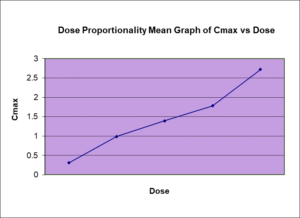Bioanalysis in Cerebrospinal fluid (CSF): Benefits, Challenges & Applications Blog

The single most important factor limiting the growth of neurotherapeutic drug development is the blood-brain barrier (BBB). It has been reported that approximately 98% of small molecules and nearly all large therapeutic molecules, such as monoclonal antibodies, antisense oligonucleotides, or viral vectors, cannot pass through this barrier.
The blood–brain barrier was discovered in the late 19th century, when the German physician Paul Ehrlich (1908 Nobel Prize in Physiology or Medicine) injected a dye into the bloodstream of a mouse. The results of the experiment surprised him and found that all the tissues were infiltrated except the brain and spinal cord, which also proved that there was a barrier between the brain and the blood. Until the appearance of high-powered microscopes in 1960, scientists determined the physical layer of the blood-brain barrier.
The human brain has no lymphatic system but produces over a half-liter of cerebrospinal fluid (CSF) each day. CSF moves over the surfaces of the brain and spinal cord and is rapidly absorbed into the general circulation. Drug entry into the CSF is considered by almost all neurologists, academic neuroscientists, and industry scientists to be a measure of drug penetration across the BBB. It is also generally accepted that trans-cranial delivery of drugs into the cerebrospinal fluid compartment is a viable solution to the problem of drug delivery to the brain.
Scientists predicted that the drug concentration in CSF can be used as a default approach to understand the PK/PD relationships in the central nervous system (CNS) and can support the extrapolation of efficacious brain exposure for new drug candidates from rodent to man. Sometimes it is necessary to administer high concentrations of drug into the CSF compartment, at other times the ependymal surface of the brain can be exposed to very these high concentrations, which can have toxic side effects. The balance of these two factors highlights the importance of understanding drug concentrations in the CSF.
What is the CSF and why we want to know its drug concentration?
Cerebrospinal fluid is a clear, plasma-like fluid (an ultrafiltrate of plasma) that exists in the human central nervous system, including the ventricle, subarachnoid space and central canal of the spinal cord. CSF performs vital functions including: support, shock absorption, homeostasis, nutrition, and immune function. Evidence from preclinical- and clinical-study reports suggests that drug concentration in cerebrospinal fluid is reasonably accurate in predicting unbound drug concentration in the brain.
CSF can be used as a useful surrogate for in vivo assessment of CNS exposure and provides an important basis for the selection of drug candidates for entry into pharmaceutical development.
Challenges of Bioanalysis in CSF
Surrogate Matrix Selection:
As quantitative analysis of biotherapeutics in cerebrospinal fluid with LC-MS becomes increasingly widespread. Human CSF is prohibitively expensive and difficult to obtain, thus by using artificial CSF in the development phase, the consumption of costly and sparsely available CSF can be minimized. It is therefore very important to select an appropriate surrogate matrix for preparing calibration standards and quality control samples.
Artificial CSF does not contain the endogenous substances found in the species of the study sample, which may lead to assay results being affected depending on the characteristics of the analyte in the surrogate matrix. Several artificial CSF compositions have been reported for small-molecule compounds and peptides quantitation, such as 0.5–17% rat plasma in perfusion fluid. 0.15% bovine serum albumin in perfusion fluid. 0.15% human serum albumin in perfusion fluid and perfusion liquid only.
In the Japan Bioanalysis Forum DG2015-15, they concluded that it was not important for the matrix to be similar to the study sample while selecting a surrogate matrix, but it was essential to confirm that the surrogate matrix did not affect the assay results due to the differences (matrix effect) between the surrogate matrix and sample. DG2015-15 suggested that the first surrogate matrix candidate tested can be pure water, which is the simplest matrix and is suitable for many polar compounds. Saline and buffer solutions (e.g., phosphate buffered saline [PBS]) are also recommended candidates, as well as organic solvents such as methanol or acetonitrile. If the selected simple reagent meets the criteria for evaluation of validity, it could be employed as the surrogate matrix.
Method Validation by using Surrogate Matrix
In order to obtain accurate results, the evaluation of validity of the selected surrogate matrix is very important. Stacy Ho & Hong Gao summarize the four common methodologies reported in the literature, which help in the selection of the most suitable method for establishing surrogate matrix validity.
- Method 1: Comparing the slopes of calibration curves. Under this method, calibration curves are prepared in surrogate matrix and authentic matrix and the slopes of the calibration curve of each matrix are compared.
- Method 2: Evaluating the accuracy of QC samples. Under this method, the calibration curve is prepared in surrogate matrix, but QC samples are prepared in surrogate matrix and in authentic matrix. Acceptable accuracy for QC prepared in both matrices indicates the surrogate matrix is suitable.
- Method 3: Determining analyte recovery. The assumption for this method is that if the analyte recovery in surrogate matrix and in authentic matrix is similar (or independent of matrix), then the surrogate is suitable.
- Method 4: Evaluating matrix effect. The assumption for this method is that if the matrix effect of surrogate matrix and authentic matrix is minimal (i.e., independent of matrix) or if the matrix effect is similar between the surrogate matrix and authentic matrix, then, the surrogate is suitable.
Discussion Groups at the Japan Bioanalysis Forum (DG2015-15) concluded that it is unrealistic to evaluate the appropriateness of a surrogate matrix by using the slope of the calibration curve alone because of the reproducibility of the slope of the calibration curve is not a criterion in the Bioanalytical Method Validation guideline.
The criteria for quantitative slope evaluation are likely to be more severe than those for evaluating the QC sample accuracy (within ± 15%). DG2015-15 recommends that the validity of the selected surrogate matrix should be evaluated using the values for accuracy and precision, especially for an LC–MS method, and not using the slope of the calibration curve.
Considerations for Bioanalysis in CSF Samples
- CSF is collected using routine lumbar puncture techniques. During this procedure, unwanted vascular bleeding may occur, causing peripheral blood to contaminate CSF, which occurs in up to 20% of standard lumbar punctures. It is important to assess the impact from hemolysis in CSF and assess its impact on quantification of target compound.
- CSF is a biological fluid of relatively low-protein content. Its collection tubes, pipettes, and storage containers must be evaluated to minimize nonspecific adsorption of the analyte.
- Surrogate matrix may lack certain enzyme systems, such as proteases or esterases, which mediate degradation of certain types of analytes in authentic matrix. Stability assessments in both authentic and surrogate matrix are therefore also important considerations.
- The solubility of some analytes in surrogate matrix may be lower than that in authentic matrix because of the absence of carrier proteins and lipids.
- The components in the surrogate matrix can differ significantly from those in the authentic matrix, resulting in a varying extent of ion suppression/enhancement in LC-MS assays.
Case Study: Validation of a Supported Liquid Extraction Procedure for Quantification of Drug X in CSF Using a Surrogate Matrix
An ultrasensitive LC–MS/MS assay for the analysis of Drug X in human CSF was developed and validated according to US FDA, EMA and ICH M10 guidelines and applied to the quantification of CSF concentrations after oral administration of Drug X. The current assay utilizes a supported liquid extraction procedure requiring 200 µL of human CSF. The selected surrogate matrix comprises inorganic salts and human serum albumin and was used for preparing Calibration Standards.
QCs were prepared in both authentic and surrogate matrix and assessed for Accuracy & Precision and all matrix-based stabilities. Method selectivity was demonstrated in both authentic and surrogate matrix, and there was no impact from matrix effect in either matrix. Hemolyzed CSF samples were also evaluated and had no impact on selectivity nor the quantitative accuracy of the method. The suitability of use (parallelism) of the selected surrogate matrix was evaluated using a dilution linearity approach. Whereby, the ULOQ prepared in human CSF (authentic matrix) was diluted with surrogate matrix and measured concentrations (spanning the calibration curve range) determined using a curve prepared in surrogate matrix.
Table 1: Dilution Linearity of Drug X in Human CSF
|
ULOQ DF =1.25 |
ULOQ DF = 2 |
ULOQ DF =5 |
ULOQ DF = 40 |
ULOQ DF = 400 |
|
| 500.00 | 500.00 | 500.00 | 500.00 | 500.00 | |
| pg/mL | pg/mL | pg/mL | pg/mL | pg/mL | |
| 478.49 | 489.31 | 476.83 | 466.91 | 523.35 | |
| 487.81 | 486.80 | 490.16 | 476.83 | 543.04 | |
| 485.36 | 484.54 | 479.10 | 467.32 | 537.64 | |
| 491.37 | 485.90 | 486.76 | 469.33 | 494.10 | |
| 494.88 | 482.60 | 487.06 | 482.72 | 495.46 | |
| 485.99 | 481.30 | 482.92 | 484.72 | 532.74 | |
| Mean | 487.32 | 485.08 | 483.81 | 474.64 | 521.06 |
| SD | 5.610 | 2.907 | 5.124 | 7.915 | 21.36 |
| %CV | 1.2 | 0.6 | 1.1 | 1.7 | 4.1 |
| %Nominal | 97.5 | 97.0 | 96.8 | 94.9 | 104.2 |
| %Bias | -2.5 | -3.0 | -3.2 | -5.1 | 4.2 |
| n | 6 | 6 | 6 | 6 | 6 |
DF = dilution factor for QC in authentic matrix diluted with surrogate matrix
The use of LC-MS/MS in the quantitation of drug concentration in plasma is a recognised endpoint for measuring drug exposure in a drug development program. Due to the existence of the blood-brain barrier, a demonstration that a brain drug candidate is able to penetrate this barrier is a very useful endpoint of drug efficacy. A demonstration of CNS exposure typically involves the measurement of drug levels in CSF. Due to the rarity of this matrix and the invasive procedures required to collect it, bioanalysis frequently utilizes a surrogate matrix. Here, we have described the suitability of a surrogate matrix and successfully validated an assay for a new drug candidate in human CSF.
Why Choose BioPharma Services for Your Bioanalysis Needs.
BioPharma Services, a full-service CRO, provides expertise in bioanalysis of cerebrospinal fluid (CSF) for drug development. Since the blood-brain barrier is a major obstacle in neurotherapeutic drug development, the use of CSF drug concentration as a surrogate matrix for assessing CNS exposure is critical. However, CSF is expensive and difficult to obtain, so an appropriate surrogate matrix selection is necessary for preparing calibration standards and quality control samples.
BioPharma’s expertise in selecting an appropriate surrogate matrix and validating the bioanalytical method is important for ensuring the accuracy of the results. BioPharma Services can aid sponsors in selecting the most suitable drug candidates for entry into pharmaceutical development, thus saving time and resources. By offering a full range of services, we can provide comprehensive support to drug development sponsors throughout the entire clinical drug development process.
The R&D scientists at Biopharma Services Inc are committed to developing accurate and sensitive LC-MS/MS detection methods and to provide customers with exemplary quality of service.
Written by: Wu Pak (Anson) Kwan, Hongzhi Liu and Dr. Nicola Hughes.
BioPharma Services, Inc., a Think Research Corporation and clinical trial services company, is a full-service Contract Clinical Research Organization (CRO) based in Toronto, Canada, specializing in Phase 1 clinical trials 1/2a and Bioequivalence clinical trials for international pharmaceutical companies worldwide. BioPharma has clinical facilities both in the USA and Canada with access to healthy volunteers and special populations.



